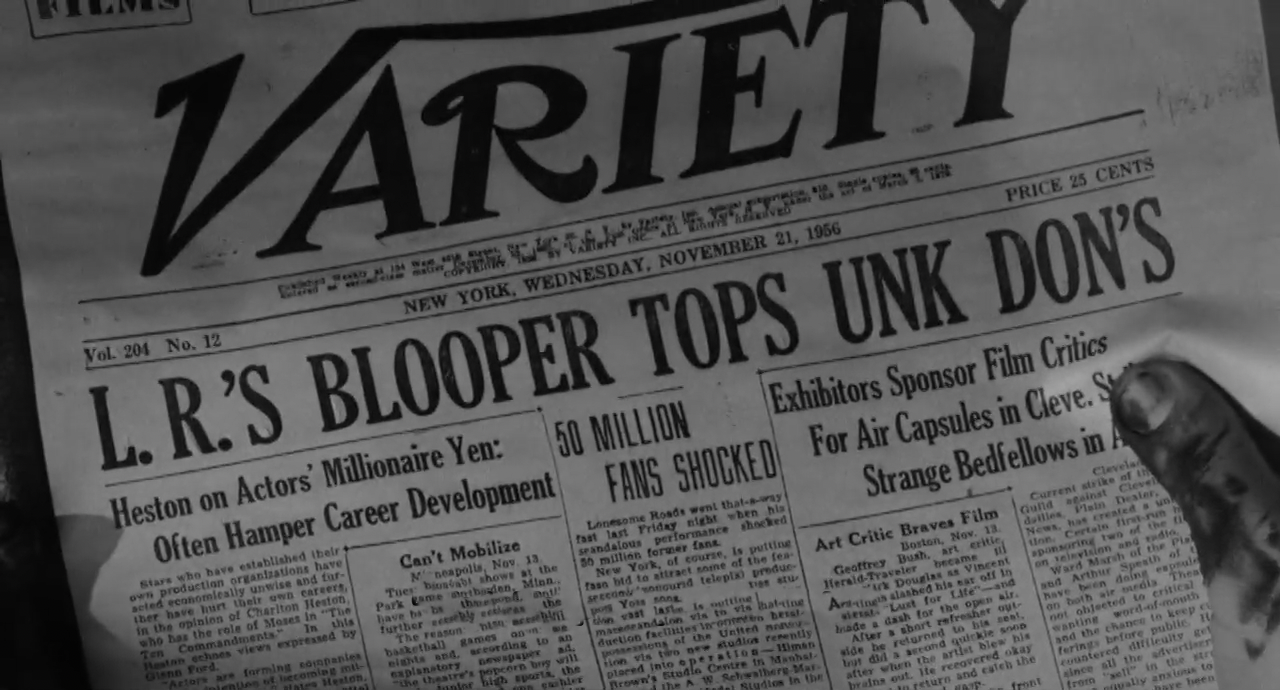“Sloane! Be lucky!”Nowhere to Go (Seth Holt + Basil Dearden, 1958)
Dec
22
Tue
.png)
A man checks into a hotel. A wall calendar reads December 22, a Tuesday. DP: Paul Beeson .
– Paul Gregory
1950s
“A geisha’s lie is not a real lie. It’s a cornerstone of our profession.” 祇園囃子 [Gion bayashi / Gion Festival Music] (Kenji Mizoguchi, 1953)
Dec
15
茶
.jpg)
Studying the tea ceremony, accompanied by director Mizoguchi (via). DP: Kazuo Miyagawa.
Having tea*
– Miyoharu
* the Bales 2025 Film Challenge for December has a few dateless themes. This is one of them.
Vulcano [Volcano] (William Dieterle, 1950)
Dec
2
sisters
.jpg)
Sisters Maria (Geraldine Brooks) and Maddalena (Anna Magnani) Natoli. Lobbycard for the US market. DP: Arturo Gallea.
Sisters, for one of the OPs' sister's birthday.
Expelled prostitute Maddalena returns to her home island Vulcano (Salina in disguise) and moves in with her sister Maria. A handsome fisherman becomes first Maria's, then Maddalena's catch.
A revenge film à la lettre, but not as you may think. Anna Magnani was cast as the lead for her lover Rossellini's Stromboli (Terra di Dio) (1950), and – after him having set eyes on Ingrid Bergman – was ditched in the latter's favour. While Rossellini fawned over the blonde, Magnani shot “her” film on a neighbouring volcanic island, blowing her former beau's efforts out of the water.
“A scientist is not like a politician who can answer every question.”宇宙人東京に現わる [Uchūjin Tōkyō ni arawaru / Warning from Space] (Kōji Shima, 1956)
Nov
30
1955

The News Herald reports (with the wrong type of headers): “Supreme Headquarters Of The World Council” “Suspend All Activities In Launching Artificial Satellites Until Notice”. DP: Kimio Watanabe.
– Japanese Bar' Ucyū-ken' Madam Ohana
“I'm not just an entertainer. I'm an influence, a wielder of opinion, a force… a force!”A Face in the Crowd (Elia Kazan, 1957)
Nov
21
1956

Variety blares L. R.'S BLOOPER TOPS UNK DON'S. It's Wednesday, November 21, 1956. DPs: Gayne Rescher & Harry Stradling Sr..
– Lonesome Rhodes
“I'm trying to run an impersonal business. Killing is very personal. Once it gets started, it's hard to stop.”The Big Combo (Joseph H. Lewis, 1955)
Nov
15
1946

A man's hand holds up a photo negative of a black-and-white picture, showing two men and a woman, and the date 11-15-46 underneath. DP: John Alton.
– Mr. Brown
“No pleasure, no pain… no emotion, no heart. Our superior in every way.”The Thing from Another World (Christian Nyby + Howard Hawks, 1951)
Nov
1

Scientists and crew armed to the teeth. DP: Russell Harlan.
Until November 3.
– Dr. Arthur Carrington
“It's in the trees! It's coming!”Night of the Demon (Jacques Tourneur, 1957)
Oct
28

John Holden (Dana Andrews) standing in Stonehenge's inner circle. He's holding a strip of paper with something written on it. DP: Edward Scaife.
“It's crazy how you can get yourself in a mess sometimes and not even be able to think about it with any sense, and yet, not be able to think about anything else. You get so you're no good for anything or anybody. Maybe it begins by taking life too serious. Anyway, I think that's the way it began for me, just before my fight with Rodriguez three days ago…”Killer's Kiss (Stanley Kubrick, 1955)
Oct
25
Fri

An already worn-out poster for “another great bout” between Davey Gordon and Kid Rodriguez. DP: Stanley Kubrick.
– Davy Gordon
Your Safety First (George Gordon, 1956)
Oct
5
2000

The protagonist, voiced by George O'Hanlon, reading an ad for tomorrow's car in the October 5, 2000 newspaper.